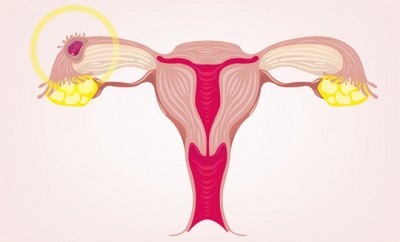Signs of Implantation: What to Look For
Signs of implantation are the first thing every planning woman looks for every month. They can be felt even before the missed period. If you want to confirm your pregnancy during the first weeks after conception, track your BBT with a special thermometer, notice your mood changes and food cravings, and start waiting for implantation spotting, cramping and other proven symptoms.
Signs of implantation can be a telltale first confirmation of a successful conception for some women. Fundamentally, implantation is a stage of each pregnancy that happens on average on the 9th day after ovulation. This process is described as the attachment of the fertilized egg, also known as a blastocyst, to the uterine lining. Not every woman has the same implantation symptoms and even the same symptoms during the first and the next pregnancies. In fact, it is pretty intriguing to point out that most women do not experience any signs associated with implantation.
Nonetheless, the signs associated with ovulation can be similar to those which are connected with successful conception. Hence, you should pay attention to timing and severity of your bloody discharge to distinguish them. But how can you know for sure whether you have possible symptoms of a successful implantation?
The Most Common Signs of Implantation
The following symptoms will help you a lot in your pregnancy confirmation:
1. Spotting is one of the most common sings of implantation.
Spotting (also known as implantation bleeding) is quite often a primary symptom of ovulation, but if it happens for just a short period of time, around seven to ten days after ovulation, then it might be a powerful indicator of the fertilized egg implantation. It is one of the most typical implantation signs caused by the embryo embedment into the uterine wall. So, if you have some light spotting or bleeding before the beginning of your period, then it is not something to worry about.
It is vital to note that implantation bleeding does not follow the normal pattern of a period and is usually scanty, pinkish and not red and heavy like the latter. However, since spotting is a common occurrence for many women, especially between menstrual periods, it is not usually a wise idea to conclude that a zygote has implanted.
2. Implantation cramping.
Implantation cramps resemble menstrual cramps and most women tend to mistake them for the start of their period. Some have re-counted cases of mild or moderate cramping in the lower abdomen and back that lasts for a day or two, unlike menstrual cramping. Implantation cramping can be associated with continual contraction of the uterine walls during embryo embedment and is more or less normal. However, occasionally cramps, especially if they are intense, can be a sign of more serious health problems. If they are unbearable or last too long, contact your doctor as soon as possible.
3. Breast changes (swelling, soreness and tenderness).
Swelling and tenderness of breasts is one of the most common complaints among those women who experience implantation symptoms. Ideally, female hormone levels change rapidly right after conception, and because of these changes, breasts tend to become tingly, swollen or sore. The timing and duration of this sign matters, because in some cases it can be also one of the ovulation symptoms. Basically, this means that if you feel breast tenderness 7 days after the possible day of ovulation, then there is a high probability that implantation might be taking place. Breast soreness associated with the normal monthly cycle lasts a day or two only.
4. Signs of implantation: high basal body temperature (BBT).
The majority of doctors have proposed that some BBT charts may be interpreted in a manner that suggests the occurrence of implantation. For instance, a rise to a third level of temperatures, represented triphasic BBT curve, or a decrease in temperature about a week after ovulation, represented by the implantation curve, can be used to determine if implantation has occurred or not. In fact, you will notice that your basal body temperature always remains high during your luteal phase if you usually chart your cycle and take temperatures on a regular basis. The rise in BBT is often caused by the hormone progesterone during ovulation and stays elevated if implantation occurs. Therefore, high basal body temperature can be used as a good sign of successful conception, and it will not drop, unless otherwise.
5. Frequent urination.
Approximately a week after successful conception you may find yourself dashing to the bathroom every hour. There you find out that you are just passing small amounts of urine. This is usually occasioned by the secretion of pregnancy hormone, called human Chorionic Gonadotropin (hCG), by the embryo when it attaches itself to the uterine wall. This hormone signals the brain to increase blood supply in the pelvic region, and hence it results in your bladder becoming extremely irritable. In fact, you might find yourself waking up in the middle of the night more often than usual to urinate too.
6. Food aversions or cravings.
According to recent research studies, the majority of women have reported a sharp sense of smell or taste as a symptom of ovulation, but food aversion or craving is considered to be a prominent pregnancy indicator. This can be attributed to the fact that during or after implantation, certain hormones associated with carrying a child are produced, and they tend to make women develop a dislike for certain favorite foods and, on the contrary, craves for foods that were not favorites before implantation. Ideally, such hormones tremendously change the way most women taste or smell different dishes. Remember, that any food aversions and cravings that occur less than seven days after ovulation cannot be taken for symptoms of implantation.
7. Hot flashes.
As much as hot flashes are one of the less common indicators of implantation, a good number of women have reported cases of such condition, which last up to 50 minutes on the day of implantation. They are normally triggered by rapid fluctuations in hormone levels at the time of egg embedment. This indicator is not included by doctors in the list of implantation symptoms, because it`s rather inconsistent, but you can combine it with the ones discussed above if you want to confirm.
Final Thoughts
While these signs of implantation may be a convenient way to know if you are pregnant, the most reliable way would be to take a pregnancy test and to schedule a pelvic examination. Also, remember that some women do not experience these signs at all. Moreover, if any of these indicators causes additional health problems, consult your doctor right away.
Recommended reading:
Signs Of Successful Implantation: Why It Is Important To Stay Optimistic
Signs of Implantation Bleeding – Implantation Bleeding and Symptoms
Implantation Spotting or Light Bleeding – Signs and Symptoms
Implantation Bleeding or Period? 5 Leading Signs of Implantation Spotting
Can You Feel Implantation? A Guide To Implantation Bleeding













